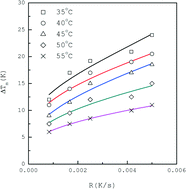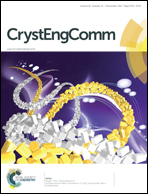A model for determination of the interfacial energy from the induction time or metastable zone width data based on turbidity measurements
Abstract
A model is developed based on turbidity measurements of the nucleation event to correlate the classical nucleation theory with the induction time and the metastable zone width (MSZW) data. The induction time or the MSZW limit is assumed to correspond to a point at which the total projected area density of accumulated crystals along the detector direction has reached a fixed (but unknown) value, fA. By fitting the experimental induction time data with the model, the interfacial energy of L-glutamic acid is recovered for the system by mixing aqueous sodium glutamate solution and sulfuric acid solution. Similarly, by fitting the experimental MSZW data with the model, the interfacial energy of L-glutamic acid is also recovered for the system by cooling the aqueous L-glutamic acid solution at constant cooling rates. The results indicate that the effect of the minimum detectable size on the recovered interfacial energy is nearly negligible. The unique feature of this model is that, although fA is unknown, the interfacial energy can still be recovered from the induction time or the MSZW data. However, the kinetic parameter of nucleation rate can only be determined if the actual value of fA is available.


 Please wait while we load your content...
Please wait while we load your content...